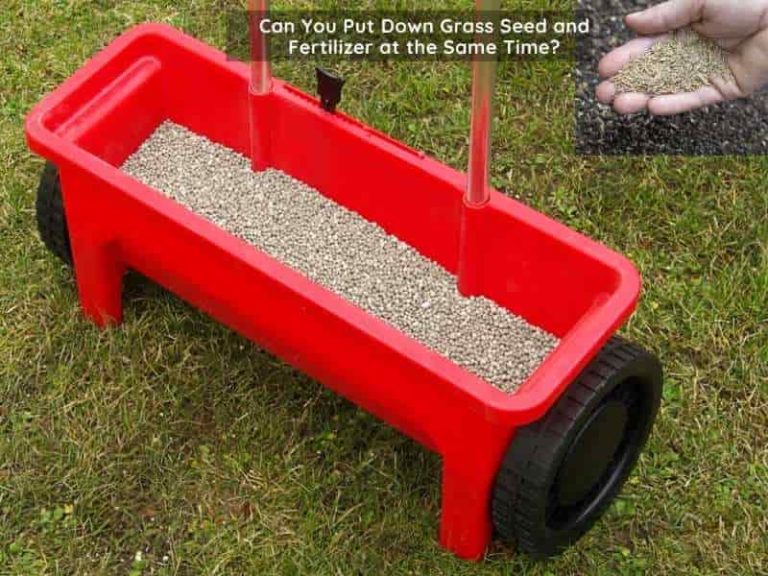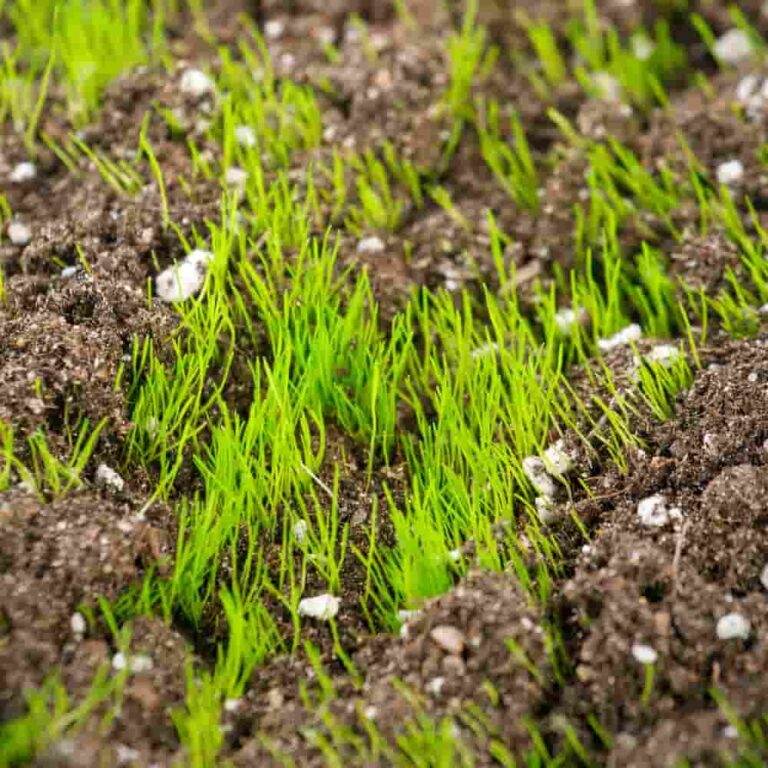Crabgrass Vs. St. Augustine
St. Augustine grass is a common turf grown in the southern lawns of the United States. It forms a dense dark green mat that makes your lawn attractive. However, it is prone to light green grass-like plants encroaching on it. The light green encroacher is likely Crabgrass, a weed. While it’s not necessarily harmful, you need to stop its growth early before it becomes a recurrent nuisance.
Crabgrass only lives for a year. However, the coarse weed can be an unpleasant sight when it leaves its seeds in the ground. These seeds will keep germinating and crowding out your lush St. Augustine lawn every year. Also, the growth persists even after you mow since Crabgrass can produce up to 15000 seeds at a time.
We’ll look at Crabgrass, its unique features, and how to remove it to save your St. Augustine grass lawn.
What is Crabgrass?
Crabgrass is a fast-growing, summer annual warm-season weed native to Europe and Eurasia. Its seeds germinate in early spring -if the average daily temperature for four consecutive days is above 55oF- through late summer. However, the plant dies after the first frost in the fall.
In mid-summer, Crabgrass reproduces numerous seeds which remain dormant on the lawn until early spring when conditions become favorable again.
Crabgrass has two prevalent varieties; the large or hairy species and the small or smooth species.
This weed has lime green to yellowish-green coarse-textured leaf blades conspicuous among dark green turf in the lawn. The leaf blades have tiny hairs. The leaf sheath of large Crabgrass seedlings is tinged purple and covered with long stiff hairs, while smooth Crabgrass has a soft leaf sheath purplish at the base. Seedheads have finger-like spikes or racemes and arise from the stem. New young leaves emerge rounded from the bud.
The ligule is membranous, short, toothed, and auricles are absent. Crabgrass has dense fibrous roots, reproduces by seeds, and spreads by stolons.
Crabgrass has a tillering or branching habit; its stems branch and spread under the ground. The roots develop at the nodes of the prostate stem. Since Crabgrass is an annual weed, it tolerates high temperatures and drought.
Crabgrass becomes prolific in lawns with thin turf, bare spots, or ones that have been scalped because of low mowing heights of less than ½ inch.
What is St. Augustine grass?
St. Augustine is a low-growing, mat-forming perennial grass native to central and southeastern North America and Central America. This grass is stoloniferous and has roots at the nodes.
St. Augustine grass leaf blades are broad, coarse-textured, contracted at the base, and pointed at the tips. The ligule is a short fringe of hairs, and the collar is petioled. The leaf sheath is flattened, overlapping, and compressed along the margin. Crabgrass has a terminal inflorescence while the spikes are racemes with spikelets. The spikes are embedded in the central axis.
St. Augustine grass propagates via stolons, plugs, and sods, but sod is the most prevalent method. It doesn’t produce viable seeds and spreads by long stolons with no rhizomes.
St. Augustine grass thrives in dry soils and doesn’t tolerate waterlogged or compacted soils. However, it can withstand high salinity levels above 16 mhos. It suffers in iron-deficient soils and survives in above pH 7.5 soils.
St. Augustine thrives in full sun – 4 to 6 hours daily – but can withstand shade. It’s one of the most shade-tolerant warm-season grasses. This grass has limited tolerance to drought and traffic. Its limited traffic tolerance means it’s primarily used on lawns but not high traffic areas like sports or athletics fields.
Weeds such as annual bluegrass and annual Crabgrass are prevalent in st. Augustine lawns because of poor maintenance such as inadequate fertilizer application, bare spots, and low moisture.
Preemergent herbicides and healthy cultural practices are encouraged to form dense canopy turf, thus reducing such weeds.
Disease such as gray leaf spots caused by overwatering is common in St. Augustine lawns. However, pest problems are minimal.
Crabgrass Vs. St. Augustine grass
Stolons spread crabgrass and Augustine grass. But, both have distinct differences. While crabgrass is an invasive weed, St. Augustine is the desired turf type grown in the southern United States.
The following table summarizes the most notable differences between crabgrass and St. Augustine grass.
| Crabgrass | St. Augustine grass |
| Lime green to yellowish-green leaves | Dark green leaves |
| Leaves emerge from different spots from the stem | Leaves emerge at a central point from the stem. |
| Rounded vernation | Rolled vernation |
| Open leaf sheath | Flattened and overlapping leaf sheath |
| Short, membranous, and toothed ligule | Ligule is a fringe of hairs |
| Tillering growth habit | Creeping growth habit |
Here are the features to look for when identifying Crabgrass from your St. Augustine lawn.
1. Leaf structure
The leaf blades of Crabgrass are lime green or yellowish-green, while the leaf blades of St. Augustine grass are medium to dark green. St. Augustine’s leaf blades’ matting makes it prime grass for lawns and landscaping decor.
The color variation makes it easy for you to weed out the Crabgrass by hand as soon as you notice it creeping on your St. Augustine lawn.
One of the key features that make Crabgrass problematic is how the leaf blades on Crabgrass emerge from different spots on the stem. St. Agustine’s leaf blades emerge from a central point.
Crabgrass’s ability to emerge from different spots makes it a fast spreader and gives it a head start against other weeds on your lawn. It also gives the weed an advantage in seed spreading. It can spread seeds over a wider area and invade the lawn in a short time.
2. Leaf vernation
Crabgrass has rounded vernation, while St. Augustine grass has a rolled vernation.
New young leaves of Crabgrass seedlings emerge rounded from the bud. Conversely, the ones for St. Augustine grass appear rounded from the bud.
3. Leaf sheaths and ligule
Crabgrass has open leaf sheaths, while St. Augustine grass has a flattened leaf sheath.
The large Crabgrass has a long fringe of hairs, and both are purplish at the base. Meanwhile, St. Augustine grass leaf sheaths are flattened and overlapping and have a fringe of hairs at the collar region.
Crabgrass’ ligule is short, membranous, and toothed, while St. Augustine’s grass ligule is composed of a short fringe of hairs.
4. Growth habit
Crabgrass has a tillering growth habit, while St. Augustine grass has a creeping growth habit.
Once established on the lawn, Crabgrass produces numerous nodes(tillers) at the joints of the primary shoot. These tillers propagate below the ground level, from which new shoots emerge separately. Tillering is responsible for Crabgrass’ fast growth since its upward development promotes new shoots from the main shoot.
Meanwhile, St. Augustine grass produces above-ground stems(stolons) that creep lowly near the ground surface. The stolons have nodes from which new shoots develop, thus spreading the grass.
What does Crabgrass in St. Augustine mean?
Usually, if you find Crabgrass growing in St. Augustine grass, that means the lawn is unhealthy and not well taken care of. Thin leaf blades, bare spots left after a disease or pest invasion, and poor mowing habits that scalp the ground provide the best conditions for Crabgrass to take over your lawn.
Crabgrass and St. Augustine grass isn’t a good mix since Crabgrass is an invasive weed in the St. Augustine lawn. Crabgrass weed on your lawn may not a landscaping disaster. However, it’s aggressively fast, and recurrent growth means you spend more time weeding every season. Since both have different mowing requirements, you end up damaging your lawn.
Healthy cultural practices are encouraged to keep Crabgrass at bay in such scenarios. In worse infested areas, post-emergent herbicides like Roundup can be used strictly without damaging the existing grass.
References
- Clemson University: St. Augustine grass.
- Texas Cooperative Extension: Crabgrass.



![When to Apply Crabgrass Preventer [Before or After Rain?]](https://lawnmodel.com/wp-content/uploads/2021/03/When-to-apply-crabgrass-preventer-min.jpg)
